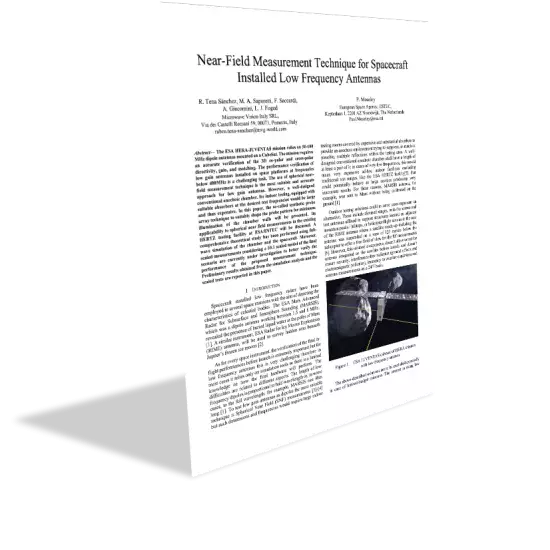
The ESA HERA-JUVENTAS mission relies on 50-100 MHz dipole antennas mounted on a CubeSat. The mission requires an accurate verification of the 3D co-polar and cross-polar directivity, gain, and matching. The performance verification of low gain antennas installed on space platforms at frequencies below 400MHz is a challenging task. The use of spherical near- field measurement technique is the most suitable and accurate approach for low gain antennas.
However, a well-designed conventional anechoic chamber, for indoor testing, equipped with suitable absorbers at the desired test frequencies would be large and thus expensive. In this paper, the so-called synthetic probe array technique to suitably shape the probe pattern for minimum illumination of the chamber walls will be presented. Its applicability to spherical near field measurements in the existing HERTZ testing facility at ESA/ESTEC will be discussed.
A comprehensive theoretical study has been performed using full- wave simulation of the chamber and the spacecraft. Moreover, scaled measurements considering a 10:1 scaled model of the final scenario are currently under investigation to better verify the performance of the proposed measurement technique. Preliminary results obtained from the simulation analysis and the scaled tests are reported in this paper.
Please register to receive the resource:



